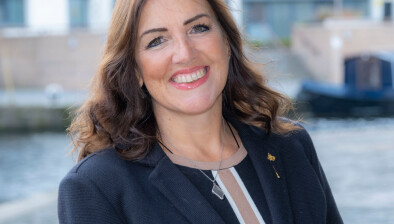Cat MacLean: David v Goliath meets online fraud – part four
Cat MacLean
In a five part series for Scottish Legal News this week, BTO partner Cat MacLean tells the story of an epic legal battle with the Clydesdale Bank. She explains the reality of litigating against a huge opponent with bottomless pockets, the cost and funding of litigation and the need to find leverage, to use it to fight, and to keep fighting. See also parts one, two and three.
Part four: Sekers v Clydesdale Bank – shifting the power dynamics
At this point, by serendipitous coincidence, I was introduced to Quantum Claims, who I had always thought of as personal injury claims people, but who, in fact, were interested in commercial litigation and keen to do more funding in this area. I sent them the metaphorically well-thumbed case papers and held my breath.
After a staggeringly short period of time – less than a week – they said yes, they would provide the top up funding we needed, they would provide ATE funding, and they would fund the deficit showing on our books which would allow me to continue with the case.
Quantum’s involvement and support unlocked the case. With them on board, we were able to complete witness statements, consult with newly appointed senior counsel, discuss matters further with the banking expert we had appointed to look specifically at the general duty of care, finalise productions and fully engage with all of the necessary proof preparation. We could head into the final mile of our marathon court case knowing that we would definitely make the finish line.
The dynamic between the parties shifted and, with so much less to lose, we were confident.
No litigator worth their salt will give you odds of greater than 75 per cent of succeeding. Put another way, in even the very strongest of cases, you have a 1 in 4 chance of losing. There was always the prospect of losing at proof (that 25 per cent risk never goes away), but critically we were no longer exposing the clients to further loss. In this sense, they now had nothing to lose.
Their opponents, by contrast, stood to lose institutional and personal reputation by running the case; they faced the prospect of an award of £500,000, plus substantial judicial expenses (costs) being made against them, and possibly an additional fee. Perhaps most importantly, they ran the risk of the floodgates opening to other claims in the event of a decision being made against them.
The balance had now shifted significantly.
For me, the central core of the case was always the argument that the advice tendered by the Bank’s employees to Sekers on the day in question fell below the required standard – nobody at any time had ever advised the cashiers to do nothing, to make no payments and to cease communication with “Steve” until the position was clarified. This failure in duty of care was always the reason why I had championed the case, and why I felt so strongly that Clydesdale should be brought to book.
Fast forward 5.5 years, after over four years of litigation, on the first day of the final evidential hearing (proof, or civil trial) in proceedings which I had raised on behalf of Sekers against Clydesdale, the case settled on the basis of a payment of a six-figure sum to Sekers – a just reward not only for the clients, but for everyone involved in the case.








